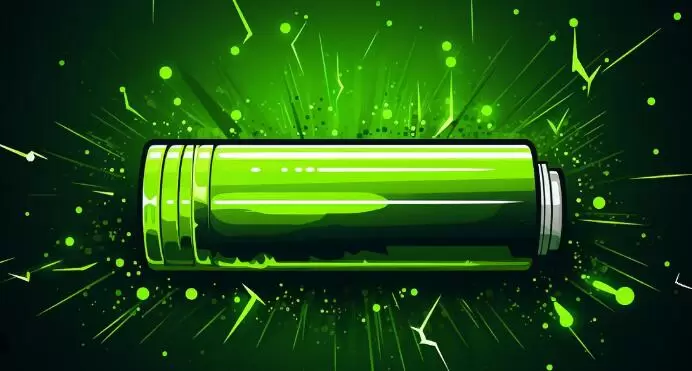Grinding is a crucial step in the production of lithium battery materials, demanding a comprehensive consideration of various factors like spindle speed, feed pump flow rate, zirconia bead filling rate, bead size, solid content of the material, viscosity, and volatility. These interdependent factors need to be optimized to enable the stable, prolonged operation of grinding machines and the effective preparation of high-quality lithium battery materials, which is a challenging endeavor.

To enhance the grinding process for lithium battery materials, the following aspects can be focused upon:
Raising the linear speed of the grinding machine significantly improves grinding efficiency. Utilizing high-quality imported beads allows for further increases in the machine's linear speed. By elevating the linear speed from 12.6 meters per second (approximately 560 rpm) to 13.5 meters per second (approximately 600 rpm), the input energy consumption increases by about 15%. Furthermore, pushing the linear speed from 13.5 meters per second to 14.7 meters per second results in an additional 18.6% increase in input energy consumption. Hence, elevating the linear speed of the grinding machine translates to a substantial rise in grinding efficiency.
Enhancing the flow rate of slurry through the grinding machine improves the particle size distribution of the grinding material and aids in particle size reduction. Therefore, as long as the normal operation of the grinding machine is not hindered, a higher slurry flow rate is preferable.
Smaller zirconia beads offer more particles per unit volume, leading to increased opportunities for particle impacts and grinding, thereby boosting grinding efficiency. Lowering bead size from 0.3mm to 0.2mm, for instance, increases the number of beads per unit volume by up to 3.375 times, resulting in a noticeable improvement in grinding efficiency.
Inadequate pre-mixing of certain materials results in minimal movement, particularly for materials near the container walls, especially at high viscosities. The goal of pre-mixing is to set the slurry into motion before entering the grinding machine. Therefore, adequate movement of all materials is achieved without necessitating overly vigorous mixing, which would lead to increased evaporation and viscosity due to the larger cross-sectional area of the container.
While maintaining final product performance, slurry performance must be adjusted to suit the grinding process of the machine, ensuring optimal flowability to meet the demands of high-volume repeated grinding. Furthermore, the slurry must remain stable within the desired particle fineness range and not re-agglomerate.
Currently, slurry viscosity rapidly increases with grinding time (from initially less than 1000 cps to over 7000 cps). One contributing factor to this viscosity increase is the instability of fine particles, leading to agglomeration and encapsulation of water, reducing flowable water content and increasing viscosity. Adjusting slurry viscosity can be approached through the following considerations:
Solid Content: Lowering the solid content reduces slurry viscosity. However, reduced solid content affects grinding efficiency and subsequent spray drying, necessitating a balanced approach.
pH Value: Slurry viscosity can be lowered at specific pH values. If the current pH value is already fixed due to other factors, then adjusting pH for viscosity reduction might not be feasible.
Addition of Surfactants: Generally, increasing the surfactant content initially reduces slurry viscosity to a minimum, followed by an increase with further surfactant addition. Finding the optimal amount of surfactant is crucial.
Temperature: For some slurries, viscosity decreases with temperature rise. Therefore, maintaining an appropriate slurry temperature is beneficial where possible.
Slurry stability refers to the absence of re-agglomeration within the desired particle fineness range during and after the grinding process. Adjusting slurry stability, similar to viscosity, involves considering solid content, pH value, surfactants, and temperature as factors that influence it.
In general, adding surfactants to adjust slurry stability may reduce viscosity. The reverse is also true. However, when an appropriate surfactant isn't found, controlling viscosity by adjusting solid content (water volume) is currently advisable. High viscosity (not exceeding 3000 cps) should be avoided, allowing the grinding process to proceed smoothly without hindering subsequent spray drying.
Rod-type grinding machines offer distinctive characteristics:
Utilizing a high-flow dynamic separation system and an efficient grinding system, rod-type machines are suitable for high-volume repeated grinding. They can grind materials into submicron and nano ranges, ensuring excellent particle size distribution.
Rod-type grinding machines have a high linear speed, delivering significant kinetic energy to zirconia beads for robust particle impacts and grinding action. This aids in the particle size reduction towards the nanometer scale.
The part of rod-type grinding machines that comes into contact with materials uses PU or ceramic materials, preventing material contamination from metal.
The grinding barrel of rod-type grinding machines employs SiC cylinders, which possess excellent cooling capabilities, preventing rapid temperature rise of materials.
In conclusion, achieving optimal grinding conditions for lithium battery materials involves a holistic approach that considers machine configuration, grinding parameters, and slurry performance. By optimizing these aspects, manufacturers can attain enhanced grinding efficiency, stable operations, and the production of high-quality lithium battery materials.

Submit your demand,
we will contact you ASAP.

Sanxin New Materials Co., Ltd. focus on producing and selling ceramic beads and parts such as grinding media, blasting beads, bearing ball, structure part, ceramic wear-resistant liners, Nanoparticles Nano Powder

